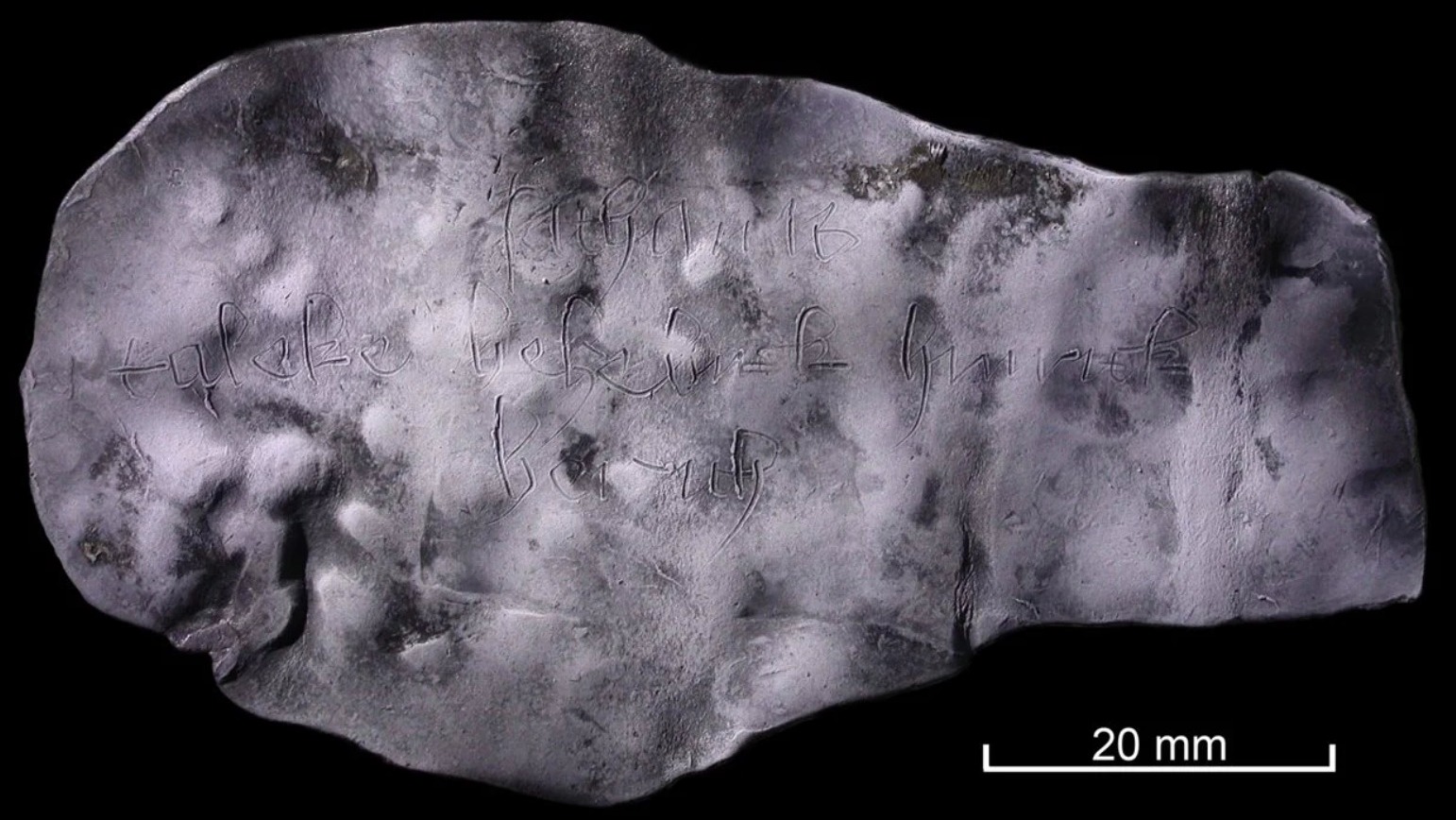Medieval 'curse tablet' summoning Satan discovered at the bottom of a latrine in Germany
A rolled-up piece of lead found in Germany was actually a 15th-century "curse tablet."

Archaeologists in Germany have discovered a rolled-up piece of lead that they think could be a medieval "curse tablet" that invokes "Beelzebub," or Satan.
Upon first glance, the researchers thought the "inconspicuous piece of metal" was simply scrap, since it was found at the bottom of a latrine at a construction site in Rostock, a city in northern Germany, according to a translated statement.
However, once they unfurled it, archaeologists realized that the 15th-century artifact contained a cryptic message etched in Gothic minuscule that was barely visible to the naked eye. It read, "sathanas taleke belzebuk hinrik berith." Researchers deciphered the text as a curse that was directed toward a woman named Taleke and a man named Hinrik (Heinrich) and summoned Beelzebub (another name for Satan) and Berith (a demonic spirit).
While researchers may never know who these people were, they did offer some ideas for the reasoning behind the bad blood.
Related: 'Curse tablet' with oldest Hebrew name of god is actually a fishing weight, experts argue
"Did someone want to break up Taleke and Heinrich's relationship? Was this about spurned love and jealousy, should someone be put out of the way?" the researchers asked in the statement.
Archaeologists said the finding was unique, especially since similar "curse tablets are actually known from ancient times in the Greek and Roman regions from 800 B.C. to A.D. 600," Jörg Ansorge, an archaeologist with the University of Greifswald in Germany who led the excavation, said in the statement. For instance, a 1,500-year-old lead tablet inscribed in Greek and found in what is now Israel calls on demons to harm a rival dancer, while 2,400-year-old tablets found in Greece ask the underworld gods to target several tavern keepers.
Get the world’s most fascinating discoveries delivered straight to your inbox.
"Our discovery, on the other hand, can be dated to the 15th century," Ansorge said. "This is truly a very special find."
Researchers weren't surprised to find the artifact at the bottom of a latrine, considering that curse tablets "were placed where they were difficult or impossible to find" by those who have been cursed, according to the statement.
Jennifer Nalewicki is former Live Science staff writer and Salt Lake City-based journalist whose work has been featured in The New York Times, Smithsonian Magazine, Scientific American, Popular Mechanics and more. She covers several science topics from planet Earth to paleontology and archaeology to health and culture. Prior to freelancing, Jennifer held an Editor role at Time Inc. Jennifer has a bachelor's degree in Journalism from The University of Texas at Austin.


